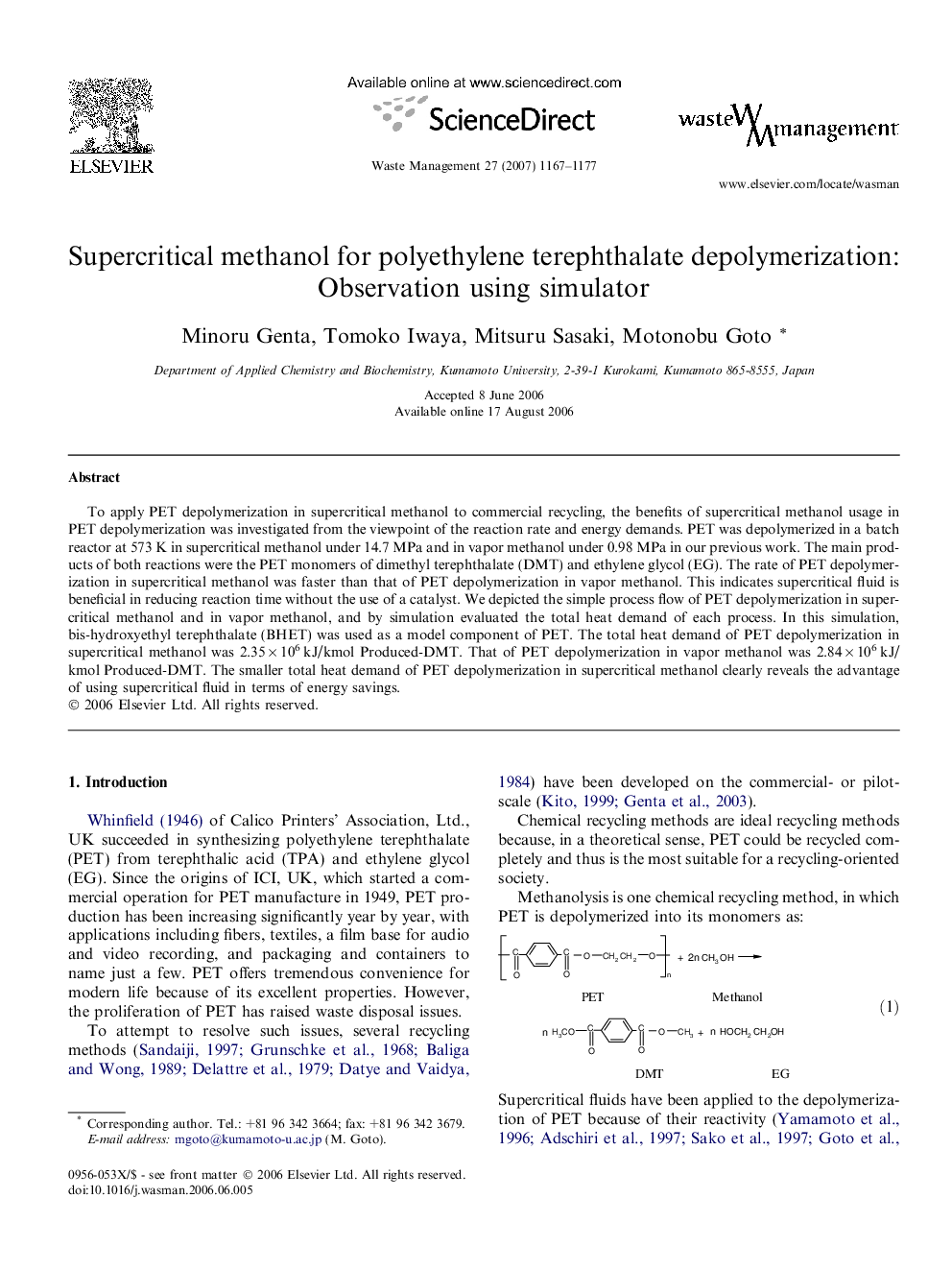| Article ID | Journal | Published Year | Pages | File Type |
|---|---|---|---|---|
| 4474111 | Waste Management | 2007 | 11 Pages |
To apply PET depolymerization in supercritical methanol to commercial recycling, the benefits of supercritical methanol usage in PET depolymerization was investigated from the viewpoint of the reaction rate and energy demands. PET was depolymerized in a batch reactor at 573 K in supercritical methanol under 14.7 MPa and in vapor methanol under 0.98 MPa in our previous work. The main products of both reactions were the PET monomers of dimethyl terephthalate (DMT) and ethylene glycol (EG). The rate of PET depolymerization in supercritical methanol was faster than that of PET depolymerization in vapor methanol. This indicates supercritical fluid is beneficial in reducing reaction time without the use of a catalyst. We depicted the simple process flow of PET depolymerization in supercritical methanol and in vapor methanol, and by simulation evaluated the total heat demand of each process. In this simulation, bis-hydroxyethyl terephthalate (BHET) was used as a model component of PET. The total heat demand of PET depolymerization in supercritical methanol was 2.35 × 106 kJ/kmol Produced-DMT. That of PET depolymerization in vapor methanol was 2.84 × 106 kJ/kmol Produced-DMT. The smaller total heat demand of PET depolymerization in supercritical methanol clearly reveals the advantage of using supercritical fluid in terms of energy savings.
